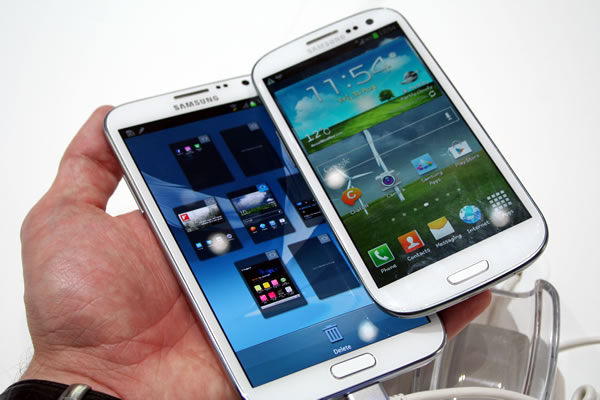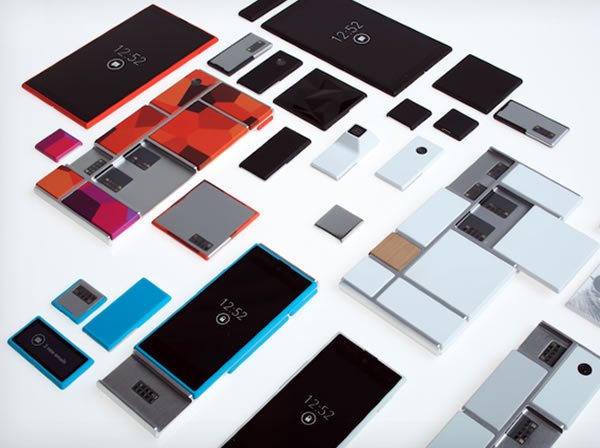Mobile Hardware Manufacturers Now Make More Money Than the Entire Consumer Electronics Market
According to the research firm IHS, the global factory revenue for smartphones and tablets will surpass the that for the entire consumer electronics market for the first time this year. Smartphone and tablet OEM factories are expected to rake in $354 billion by the end of the year, edging out consumer electronics OEM factories, who expect to make $1 billion less by then. This is the result of a big spike in mobile device demand, as consumer electronics factory revenue was 30% higher than that for smartphones and tablets only last year. IHS expects that smartphones and tablets will continue to grow past the consumer electronics industry, with their factory revenue outpacing that of consumer electronics by 35% in 2017.
I didn’t even know that smartphones and tablets were in a category outside of consumer electronics, which IHS describes as “a broad category that includes hundreds of product types, including televisions, audio equipment, cameras and camcorders, video game consoles and home appliances.”
Samsung Shipped More Phones Than Apple, LG, and Nokia Combined, Gets Nearly 29% of Global Mobile Phone Market Share

According to Strategy Analytics, Samsung’s 120 million phones shipped last quarter makes for more than Apple’s, LG’s, and Nokia’s shipments combined. While these figures are for shipments and not sales, Strategy Analytics’ Executive Director Neil Mawston says that aside from some Chinese vendors who may be sitting on inventory, and Apple, who may have more iPhone 5Cs on hand since they’re not moving nearly as well as the 5Ss, he doesn’t see much of a difference between shipments and sales.
Here are the numbers on global mobile vendor shipments and market share:
Global Mobile Phone Vendor Shipments
(Figures from Strategy Analytics via CNet)
| Vendor | Q3 ’12 shipments (Millions) |
Q3 ’13 shipments (Millions) |
|---|---|---|
| Samsung | 103.0 | 120.1 |
| Nokia | 82.9 | 64.6 |
| Apple | 26.9 | 33.8 |
| LG | 14.4 | 18.3 |
| Huawei | 12.1 | 14.6 |
| Others | 151.1 | 166.4 |
| Total | 390.4 | 417.8 |
Global Mobile Phone Vendor Market Share
(Figures from Strategy Analytics via CNet)
| Vendor | Q3 ’12 market share | Q3 ’13 market share |
|---|---|---|
| Samsung | 26.4% | 28.7% |
| Nokia | 21.2% | 15.5% |
| Apple | 6.9% | 8.1% |
| LG | 3.7% | 4.4% |
| Huawei | 3.1% | 3.5% |
| Others | 38.7% | 39.7% |
Motorola’s Project Ara: An Open Modular Smartphone Platform
Remember Phonebloks — Dave Hakken’s concept for a modular smartphone that would let users customize their phone with only the components they want?
Motorola has announced Project Ara, whose goal is to develop a free, open hardware platform for creating modular smartphones. Their goal is to do for mobile hardware what Android did for mobile software: to create a vibrant third-party developer ecosystem, lower the barriers to entry, and speed up development.
Project Ara has been in motion for a year, and having met with Phonebloks’ Dave Hakkens, they’re now engaging with the Phonebloks community and sending out volunteer research scouts to find out how people make mobile device choices. In a few months, they expect to invite developers to start creating modules for the Ara platform, and expect an alpha release of the MDK — the Module Developer Kit — “sometime this winter”.
They’ll be announcing more on the Motorola blog, as developments take place.
Coming Soon: Google’s Smartwatch
According to reports, Google’s Android-based smartwatch is in late-stage development, and talks with Asian vendors to start mass production are already taking place. It’s expected to lean heavily on Google Now, which makes sense: a smartwatch is the perfect place to have “assistant” software that can quickly answer questions, make recommendations, and even predict what information you’ll need based on where and when you are.

